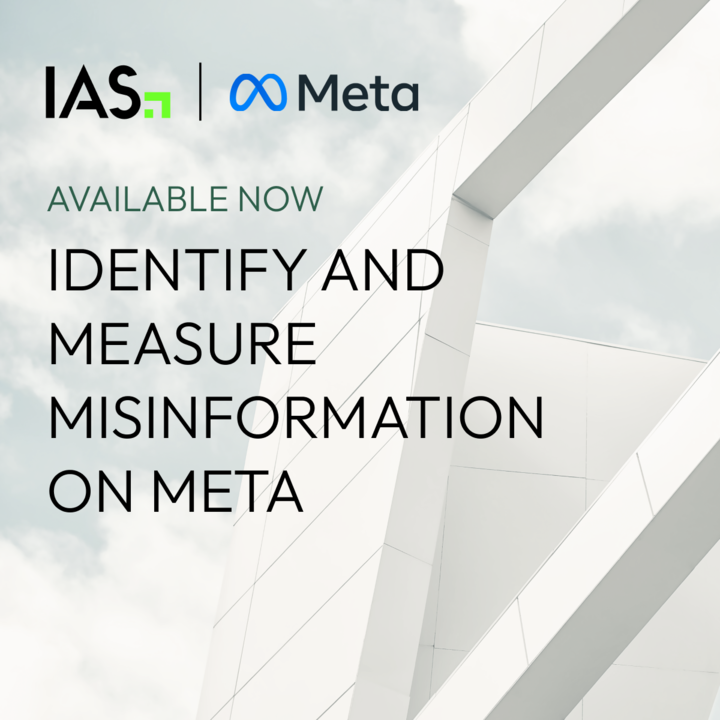Coronavirus has created an unprecedented disruption to the daily lives of millions worldwide and online news/content related to the evolving situation burgeons. While the world faces larger and more pressing issues than advertising contexts and brand suitability, many marketing and publishing professionals are seeking guidance on how to appropriately navigate this unprecedented situation. In an effort to be better informed and focus on the facts, IAS surveyed US consumers on March 12 to determine how they perceive content adjacencies—and whether they’re changing their digital behaviors related to the pandemic.
While some advertisers have been quick to make adjustments to avoid being associated with the virus, this new research found that most consumers have been actively seeking out coronavirus news online, in a juxtaposition of media supply and demand.
The research also indicates that many consumers ultimately believe that the appropriateness of coronavirus ad adjacency “depends on the brand,” which makes sense. More specifically, consumers most want to see Health/Pharma, Government, and Educational ads in coronavirus adjacencies while they least want to see Travel, Food/Beverage, and Finance brands alongside this type of content.
It is important for our industry to maintain a strong awareness of the global zeitgeist amidst this serious situation, and IAS encourages advertisers to consider refining the precision of their brand safety and suitability strategies to adapt to the dynamic nature of the unfolding situation. Through the use of IAS’s cutting-edge Contextual Intelligence technology, every brand can control with precision where their respective ads do/don’t appear online. This situation is not one where either ‘more’ or ‘less’ keyword blocking should be universally adopted as the only protective measure, it is one that highlights the need for precision in guiding a given brand either toward or away from content corresponding with that specific brand’s values and identity.
For content publishers, particularly news publishers, ad impression volumes can potentially be drastically impacted by overzealous keyword blocking strategies. Yet, it is worth bearing in mind in the current situation that 59% of consumers are consuming more news in general because of the evolving coronavirus news coverage. Publishers are seeing increased traffic to their sites and have the ability to leverage the industry-leading predictive science of IAS’s Publisher Optimization technology to predictively avoid impression attempts that would be likely blocked and instead, lean into impressions that will likely be successfully delivered. There is a strong argument to be made that an all-or-nothing perspective on either “don’t block coronavirus content” or “do block that content” completely misses the point that this decision does not necessarily need to be made if you are armed with the latest technological solutions, such as our Publisher Optimization solution.
Another proactive suggestion is to look at safety and suitability within programmatic environments. The IAS Extended Brand Safety categories are launching within some of the world’s most popular DSPs. This solution precisely assesses online content at scale, including granular assessments for topics like ‘death’ and ‘pandemics.’ This empowers brands to have the tools to guide their marketing messages away from content that’s not suitable for them with granular control and toward content that is right for them and the situation. IAS also regularly monitors content for misinformation and “fake news” which could proliferate in crisis situations.
Content Classification: For brands not using IAS solutions, you can consider just exempting trusted news publishers from certain content classification categories related to the coronavirus situation. For those using IAS, this is an option, but a more sophisticated solution is also available. Brands can leverage our Contextual Intelligence technology to precisely classify content at scale while also using granular controls to determine where you do and don’t want your brand to appear.
Keyword Blocklists: Even though newer safety/suitability technologies are available and should be utilized, keywords still form a part of a broader suitability and safety strategy. Advertisers should, as a first step, revisit their overall existing keywords against which they are blocking. Removing unnecessary or dated blocked words can open-up scale–this should be done regularly. Consider using your existing keywords to inform our AI-powered Contextual Intelligence technology, which can ostensibly deliver smart protection by considering the sentiment, emotional direction, and semantic understanding of a given context. In plain language, give us your keywords and this will inform our AI to protect your brand only when it makes sense and not block when you want to be near content.
Publisher Tools: Leverage a brand safety/suitability toolset, such as IAS Publisher Optimization, that can accurately predict which impression attempts will likely be blocked and which are unlikely to be blocked. This will help optimize yield and decrease media wastage.
In general, it’s advisable for brands to become clear on where you do and do not want your ads to appear–we have the best technology to make your decisions happen and it starts with clarity on your own brand identity. For publishers, leverage Publisher Optimization technology to minimize media wastage and maximize yield amid increased site traffic.
Most important of all for everyone, amidst this unusual situation, please take care and stay safe!
Download the consumer research to discover more about how consumers perceive advertising and content amid the current outbreak. To learn more about leveraging world-class solutions to navigate this situation, please reach out to your IAS representative or email info@integralads.com.
IAS would like to give special thanks to all of the healthcare providers, public safety officials, and others working to keep our communities safe in the midst of the current situation. We as an industry can make a difference. IAS has joined a consortium of ad tech players to help fight the spread of misinformation related to coronavirus. We will be deploying PSA ads pointing consumers to CDC and WHO information related to coronavirus. To our colleagues in the industry, we implore you to join this initiative headed by Joshua Lowcock, Chief Digital and Brand Safety Officer at UM. Together we have the power to make a powerful and positive impact by highlighting timely and helpful information from the appropriate authorities. If you are interested in participating please reach out to Joshua via LinkedIn or direct message on twitter to @JoshuaUMWW.
 Share on LinkedIn
Share on LinkedIn Share on X
Share on X


